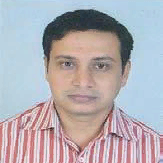
Pravin Shrinath
Work place: Department of Computer Engineering MPSTME, SVKM’s NMIMS University, Mumbai, India
E-mail: shrinath.pm@gmail.com
Website:
Research Interests: Computational Engineering, Computer Science & Information Technology
Biography
Mr. Pravin Shrinath has received B.E. (Computer science and Engineering) degree from Amravati University in 2000. He has done Masters in computer Engineering in 2008. Currently pursuing Ph.D. from Mukesh Patel School of Technology Management & Engineering, NMIMS University, Vile Parle (w), Mumbai. He has more than 10 years of teaching experience and currently working as Associate Professor in Computer Engineering Department, MPSTME.
Author Articles
Tumour Delineation using Statistical Properties of The Breast US Images and Vector Quantization based Clustering Algorithms
By H. B. Kekre Pravin Shrinath
DOI: https://doi.org/10.5815/ijigsp.2013.11.01, Pub. Date: 8 Sep. 2013
Breast cancer is most common and leading cause of death among women. With improvement in the imaging modalities it is possible to diagnose the cancer at an early stage moreover treatment at an early stage reduces the mortality rate. B-mode ultrasound (US) imaging is very illustrious and reliable technique in early detection of masses in the breast. Though it is complimentary to the mammography, dense breast tissues can be examined more efficiently and detects the small nodules that are usually not observed in mammography. Segmentation of US images gives the clear understanding of nature and growth of the tumor. But some inherent artifact of US images makes this process difficult and computationally inefficient. Many methods are discussed in the literature for US image segmentation, each method has its pros and cons. In this paper, initially region merging based watershed and marker-controlled watershed transforms are discussed and implemented. In the subsequent sections we proposed a method for segmentation, based on clustering. Proposed method consists of three stages, in first stage probability images and its equalized histogram images are obtained from the original US images without any preprocessing. In the next stage, we used VQ based clustering technique with LBG, KPE and KEVR codebook generation algorithm followed by sequential cluster merging. Last stage is the post processing, where we removed unwanted regions from the selected cluster image by labeling the connected components and moreover used morphological operation for closing the holes in the final segmented image. Finally, results by our method are compared with initially discussed methods.
[...] Read more.Other Articles
Subscribe to receive issue release notifications and newsletters from MECS Press journals